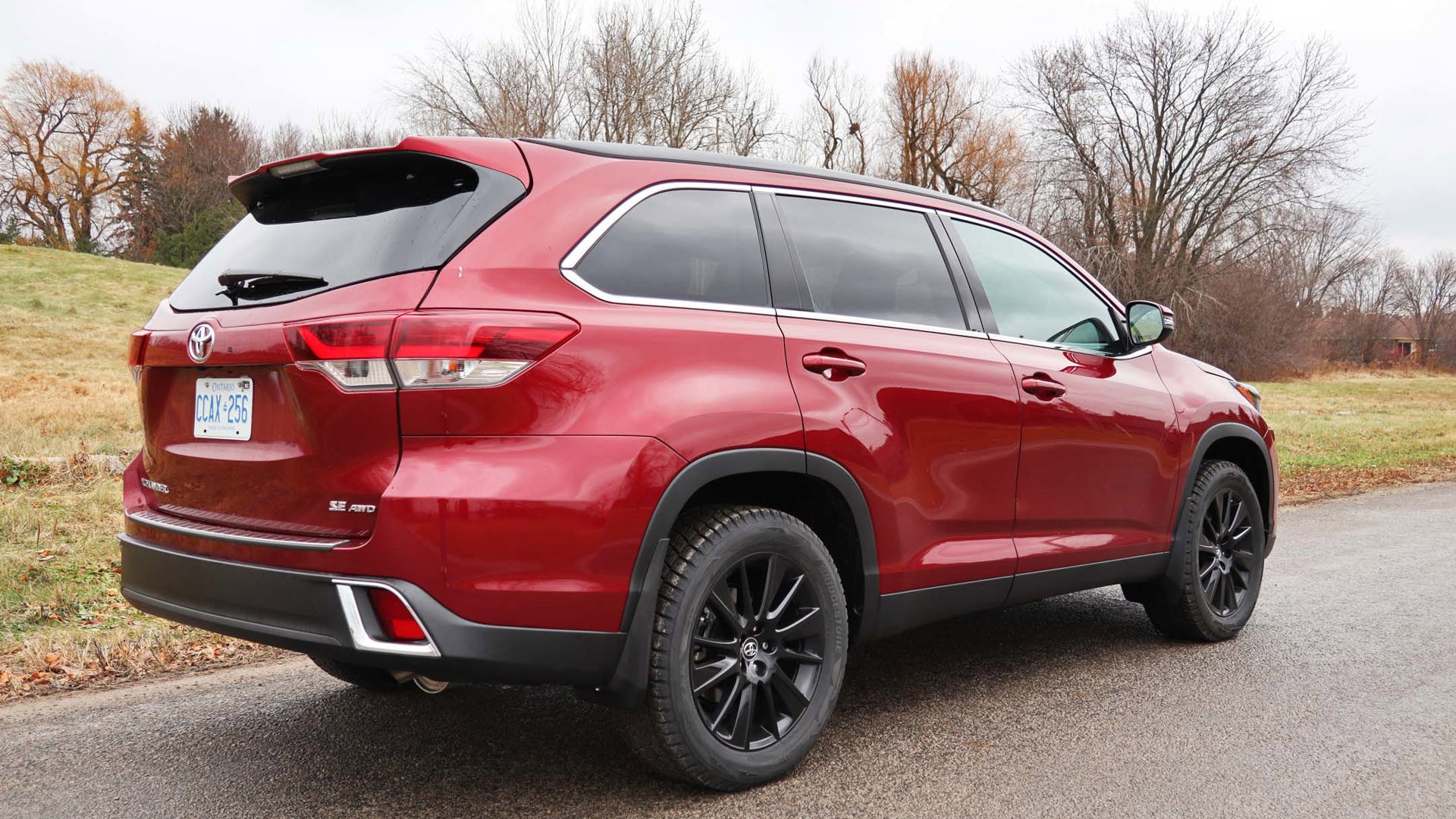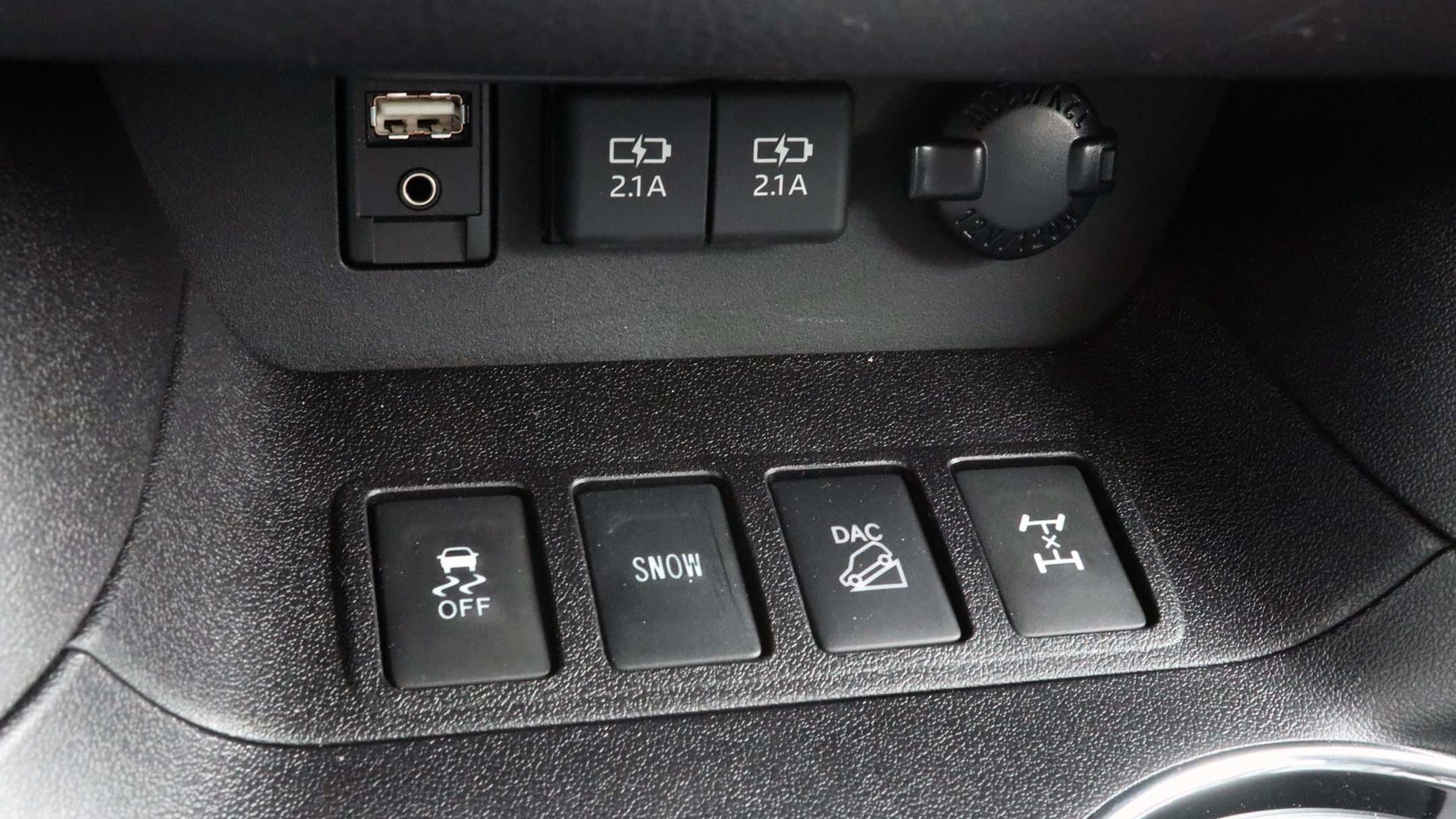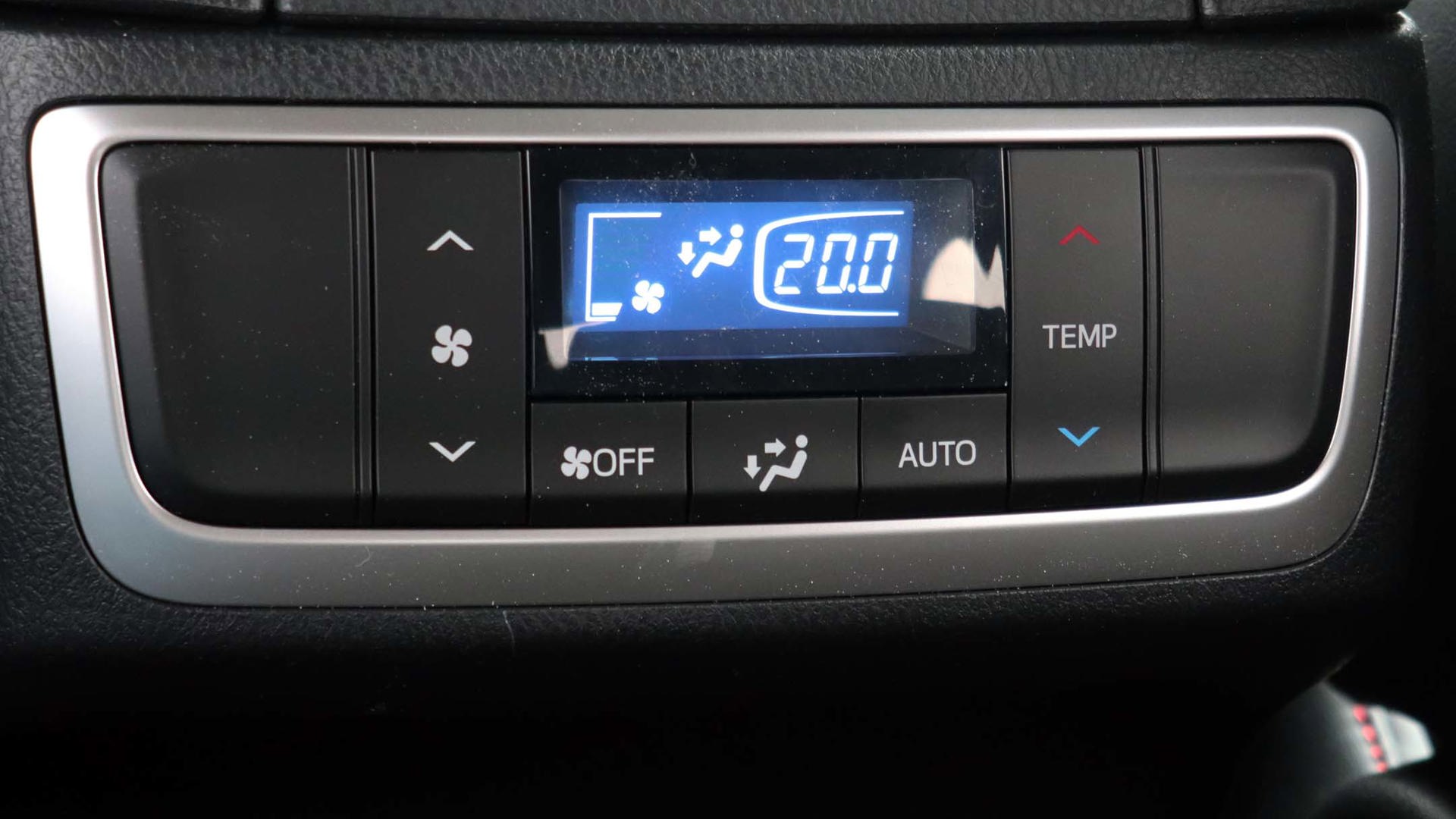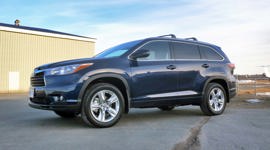 AutoTrader SCORE
AutoTrader SCORE
-
STYLING7/10
-
Safety8/10
-
PRACTICALITY8/10
-
USER-FRIENDLINESS9/10
-
FEATURES7/10
-
POWER7/10
-
COMFORT8/10
-
DRIVING FEEL7/10
-
FUEL ECONOMY7/10
-
VALUE7/10
Whenever it comes time to replace my computer – a task I absolutely detest – I call the same company that’s been supplying me for many years. I ask for something that’ll start up each time without any fuss, file my photos, pick up my emails, and not lose my work. Throw in staying within my budget, and that’s all I want.
It’s a compliment, not a knock against it, to say that the Highlander will get a family where it needs to go, without needing to think about the car, just the journey.
And yet, with motor oil in my veins instead of blood, and an almost animalistic need to be behind the wheel (because it’s just plain fun to drive), I always have to remember that what makes so many Canadian auto buyers tick pretty much mirrors my computer dreams: enough room, comfortable, starts whenever asked, requires little in fuss or repairs, and doesn’t break the bank. They don’t want high horsepower, or lots of bells and whistles, just routine A to B whenever they need to go.
And that’s no doubt why the Highlander does so well for Toyota. Outsold only by the smaller RAV4 amongst the company’s sport-utes, the three-row Highlander isn’t flashy, and it definitely isn’t an exciting driver, but it has that essential-to-buyers aspect of getting the job done, quietly and efficiently. It’s a compliment, not a knock against it, to say that the Highlander will get a family where it needs to go, without needing to think about the car, just the journey.
The Highlander got a refresh for 2017, and so continues forward into 2019 pretty much unchanged. It uses a 3.5-litre V6, churning out 295 horsepower and 263 lb-ft of torque, mated to an eight-speed automatic; there’s also a hybrid version available.
The base LE trim level starts in front-wheel drive, at $37,000, while in all-wheel it’s $39,495. The other two levels are AWD only: my XLE tester started at $45,495, while the range-topping Limited is $51,800. (Hybrid models are $50,950 in XLE, and $57,260 in Limited.) My ride was further augmented with an SE package that added 19-inch black wheels, sport-tuned suspension, black interior and exterior trim, second-row captain’s chairs in place of a bench, LED fog lamps, and ambient lighting for an additional $1,910, bringing it to $47,405 before freight and taxes.
For that you get such items as the dual-zone automatic climate control, flat-folding second- and third-row seats, heated mirrors, and a package of adaptive cruise control, lane-departure assist, emergency braking with pedestrian detection, and automatic high-beam headlights included on every Highlander. The XLE then adds a long list of items, including an eight-inch touchscreen with navigation (the base screen is 6.1-inch), heated leather seats, auto-dimming mirror, power liftgate with flip-up glass, sunroof, and blind-spot monitoring. (Alas, my new gotta-have-it option, the heated steering wheel, only comes on the Limited.)
The optional suspension is more “sport” in name than in actual handling, although it does give the Highlander a bit more poise around tight corners. It also firms up the ride, although not so much that it’s unpleasant. There’s almost nothing in the way of steering feedback, but steering response is smooth and predictable, and the vehicle feels firmly planted on the highway, where you can relax and enjoy the drive without correcting to keep it straight.
Despite being V6-powered and with good-looking power numbers on paper, initial acceleration can be leisurely, although it’s fine once it gets going and gives you enough passing power on the highway. The auto-stop shuts the engine off at idle, such as when you’re sitting at a light (everything else continues to function, of course) to save on fuel and emissions, but there’s a button to temporarily disable the system if you prefer. The AWD Highlander is rated at a combined 10.6 L/100 km, while in cold-weather driving, I averaged 11.4 L/100 km.
The all-wheel system primarily runs in front-wheel but will send torque to the rear as needed for traction, including on acceleration. If you need to get through snow or a slippery surface at low speeds, such as when getting out of your driveway, you can press a button to lock the differential and keep continuous power to the rear; the AWD will go back into its automatic mode once you get up to speed.
The front seats are roomy and comfortable, as are the second-row chairs, which can be slid forward or back to prioritize legroom for second- or third-row passengers, depending on what’s needed. Folks in that row can set their own temperature, mode, and fan speed, including an “auto” setting, via a controller on the rear of the centre console. The seats also slide farther to provide access to the third row, which holds up to three small people on uncomfortably flat cushions.
In addition to space for people, there’s a goodly amount for… well, goods. The curving centre console has two sliding lids that reveal a decently sized cubby, and a shelf runs under the dash, perfect for stuffing mittens; you can also stash a phone there and then run the charging cord down through a keyhole. If you get the second-row captain’s chairs, there’s a deployable tray on the side of one, with two cupholders in it, while third-row passengers get cupholders as well.
The infotainment system’s touchscreen is easy to use, and the navigation system accepts a spoken address all at once, and finds it quickly and easily. The onscreen icons are large and intuitive, but the hard controls are a little less so. What look like buttons to quickly get you to the home page, apps, or other functions are actually haptic controllers, and they can be a bit finicky if it’s cold. Meanwhile, the dials for the stereo’s volume and tuning are shallow and sharp-edged, and not always easy to turn.
The XLE’s system includes satellite radio, Bluetooth, text- and email-to-speech function, and Siri, along with four USB charging ports, but Apple CarPlay and Android Auto are still missing in action. There’s also no rear-seat entertainment system available on any trim level.
There’s a lot of competition in this segment, and the Highlander faces it from some serious contenders, including Subaru’s new Ascent, Volkswagen’s Atlas, Honda’s Pilot, and the sharp-handling Mazda CX-9. But the Highlander is straightforward, it’s smooth, it’s roomy, and it gets everyone where they want to go without any fuss. And for many buyers, that’s exactly what it should be all about.
| Engine Displacement | 3.5L |
|---|---|
| Engine Cylinders | V6 |
| Peak Horsepower | 295 hp @ 6,600 rpm |
| Peak Torque | 263 lb-ft @ 4,700 rpm |
| Fuel Economy | 12.0/8.9/10.6 L/100 km cty/hwy/cmb |
| Cargo Space | 391 / 1,198 / 2,356 L behind 3rd/2nd/1st row |
| Model Tested | 2019 Toyota Highlander XLE V6 AWD |
| Base Price | $45,495 |
| A/C Tax | $100 |
| Destination Fee | $1,815 |
| Price as Tested | $49,320 |
|
Optional Equipment
$1,910 – SE Package (19-inch black alloy wheels, second-row captain’s chairs, black badging and roof rails, black sport grille, sport interior trim, black headlamp surround, LED fog lamps, ambient lighting, sport suspension) $1,910
|
|











































